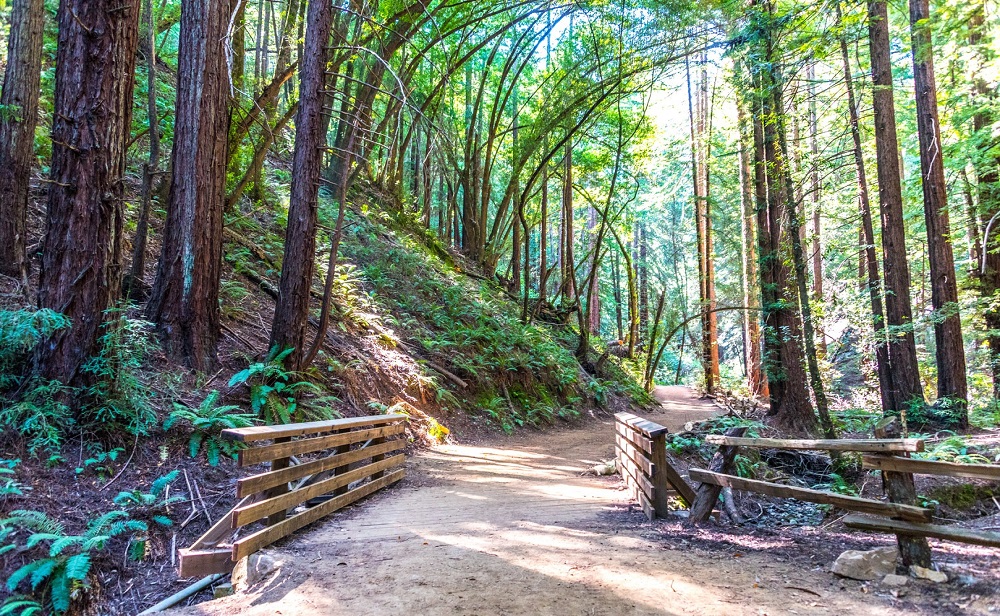Good hikes near me—this simple search query reveals a world of outdoor adventure waiting to be explored. Whether you’re a seasoned hiker seeking challenging ascents or a family looking for a leisurely stroll, the right trail is out there. Finding it, however, requires understanding your preferences, utilizing reliable resources, and critically evaluating the information available. This guide helps you navigate the process, from identifying the ideal trail based on difficulty and scenery to leveraging online tools and user reviews for informed decision-making.
We’ll delve into the factors that influence trail selection, exploring the nuances of distance, elevation gain, accessibility, and the overall experience a hiker expects. We’ll also compare various online platforms for locating trails, highlighting their strengths and weaknesses, and providing tips for verifying trail information. Finally, we’ll show you how to effectively interpret user reviews and make the most of your hiking experience.
Understanding User Intent Behind “Good Hikes Near Me”
The search query “good hikes near me” reveals a user seeking outdoor recreation opportunities within their proximity. However, the simplicity of the phrase masks a wide range of underlying intentions and preferences. Understanding these nuances is crucial for providing relevant and satisfying search results.
The various factors influencing a hiker’s trail selection contribute to the complexity of this seemingly straightforward query. Different individuals approach hiking with distinct motivations, levels of experience, and expectations. This leads to a diverse set of criteria used to define a “good” hike.
Types of Hikers
The phrase “good hikes near me” attracts a diverse user base. This includes beginners looking for easy, accessible trails, experienced hikers seeking challenging climbs and remote wilderness experiences, and families searching for trails suitable for children and strollers. Each group has unique needs and priorities. For example, a family might prioritize shorter, less strenuous trails with scenic overlooks, while an experienced hiker might prefer longer, more challenging routes with significant elevation gain.
Factors Influencing Trail Choice
Several key factors significantly influence a hiker’s choice of trail. Distance, difficulty, scenery, and accessibility are paramount. Distance considers the total length of the trail, impacting the time commitment required. Difficulty encompasses elevation gain, trail surface (paved, rocky, etc.), and overall strenuousness. Scenery relates to the visual appeal of the trail, encompassing views, flora, and fauna. Accessibility encompasses factors like trailhead parking, accessibility for people with disabilities, and the presence of amenities such as restrooms or water sources.
Location’s Crucial Role
The location implied by “near me” is critical in interpreting the search query. A “good hike” in a densely populated urban area might be a relatively short, well-maintained trail in a local park. In contrast, a “good hike” in a rural area with extensive wilderness might involve a significantly longer and more challenging trek. The geographic context fundamentally alters the definition of “good” and the types of trails that would meet a user’s expectations.
Defining “Good” in Hiking
The term “good” in the context of “good hikes near me” is subjective and highly dependent on individual preferences. For some, a “good” hike might mean a relatively easy trail with stunning views and minimal elevation change. Others might define a “good” hike as a challenging route offering a sense of accomplishment and a connection with nature. Factors like trail maintenance, solitude, and the presence of wildlife can also contribute to a user’s perception of a “good” hiking experience. The search query implicitly reflects this spectrum of individual preferences and expectations.
Data Sources for Locating Nearby Hikes
Finding the perfect hiking trail near you requires access to reliable information. Several online platforms and mapping tools provide detailed trail data, but their strengths and weaknesses vary. Understanding these differences is crucial for efficient trail planning and a safe hiking experience.
Numerous resources exist for discovering hiking trails, each offering a unique set of features and data. Effectively utilizing these tools involves understanding their strengths and limitations, and combining their information for a comprehensive picture.
Online Resources for Finding Hiking Trails
Several popular websites specialize in curating and providing information about hiking trails. AllTrails, Hiking Project, and local park websites are among the most widely used, each offering distinct advantages.
AllTrails is known for its extensive database, user-generated reviews, and detailed trail maps. Hiking Project focuses on a more community-driven approach, emphasizing user contributions and trail conditions. Local park websites often provide highly accurate information specific to their managed trails, including up-to-date trail closures and permits.
Utilizing Mapping Tools for Trail Identification
Mapping tools are invaluable for identifying trails based on proximity. Most mapping services (Google Maps, Apple Maps, etc.) allow users to search for “hiking trails near me” or to input specific trail names. Further refinement can be achieved by using filters based on distance, elevation gain, and trail difficulty. For example, zooming in on a map in a specific area and searching for “hiking trails” will often reveal nearby options with associated details. These details often include trail length, elevation profile, and user ratings.
Verifying the Accuracy and Reliability of Trail Information
Verifying trail information from different sources is crucial to ensure a safe and enjoyable hike. Cross-referencing data points across multiple platforms helps identify inconsistencies or outdated information. Checking for recent user reviews and photos on platforms like AllTrails or Hiking Project provides valuable insights into current trail conditions. Additionally, consulting local park websites or contacting park rangers can confirm trail closures, permits, or any significant changes.
Comparison of Data Points Provided by Different Platforms
The following table compares the data points commonly provided by different platforms:
| Platform | Distance | Elevation Gain | Reviews | Other Data Points |
|---|---|---|---|---|
| AllTrails | Precise distance measurements, often with multiple options for loops or out-and-back trails. | Detailed elevation profiles, often with graphical representations. | Abundant user reviews, often with photos and ratings. | Trail maps, difficulty rating, estimated time, parking information. |
| Hiking Project | Accurate distance data, often sourced from GPS tracks. | Elevation gain information typically available. | User reviews, often focused on trail conditions and recent experiences. | Trail maps, difficulty rating, user-submitted photos, links to related trails. |
| Local Park Websites | Distance information usually provided for managed trails. | Elevation gain may or may not be specified. | Reviews may be available, often limited to official comments. | Trail maps, accessibility information, rules and regulations, permits required. |
Visual Representation of Hiking Trails
Creating a compelling visual representation of a hiking trail goes beyond simply mapping its route. It involves conveying the essence of the experience – the sights, sounds, and the feeling of the terrain underfoot. Effective visual descriptions help potential hikers assess the trail’s difficulty and decide if it aligns with their abilities and preferences.
Describing a Hiking Trail with Visual Details
Imagine ascending a trail that begins in a sun-dappled forest, the air thick with the scent of pine and damp earth. Towering Douglas firs, their bark a tapestry of russet and grey, frame the path. Sunlight filters through the canopy, creating an ethereal glow on the mossy forest floor. As the trail climbs, the trees gradually thin, giving way to a breathtaking panorama. Jagged peaks pierce the azure sky, their snow-capped summits reflecting the sunlight like scattered diamonds. The trail itself is a ribbon of brown earth, winding its way through wildflowers of vibrant hues – splashes of purple lupine, sunny yellow buttercups, and delicate white daisies. Further up, the landscape transforms again; the trail becomes rocky, with exposed granite shimmering in the afternoon sun. The air grows thinner, and the wind whispers through the exposed crags. This visual narrative helps paint a picture far more evocative than a simple map.
Creating a Visual Elevation Profile
An elevation profile illustrates the trail’s changes in altitude. Imagine a graph where the horizontal axis represents distance along the trail, and the vertical axis represents elevation. A text-based description could read: “The trail begins gently, with a gradual incline for the first mile (represented by a slowly rising line on the graph). Then, a steeper climb follows for half a mile (a sharp upward slope on the graph), leading to a plateau (a flat line) that extends for a quarter mile. Finally, a moderate descent (a gradual downward slope) completes the trail.” This description allows readers to visualize the changes in elevation without an actual graph, providing a sense of the trail’s difficulty. Another example: “The trail starts with a relatively flat section, then climbs steadily for about 1.5 kilometers, reaching a peak at 1200 meters. From there, it descends gradually over 2 kilometers, with a short, sharp drop near the end.”
Describing the Surrounding Environment
The surrounding environment adds another layer to the visual experience. Instead of simply stating “dense forest,” describe the vibrant greens of ferns unfurling beneath towering redwoods, their massive trunks reaching towards the sky like ancient sentinels. Mention the chattering of squirrels amongst the branches, or the flash of blue from a fleeting Steller’s jay. Instead of “mountain views,” paint a picture of majestic peaks bathed in the golden light of sunset, casting long shadows across valleys carpeted in a sea of green. Describe the wind whipping through tall grasses in an open meadow, creating waves of motion. Mention the scent of wildflowers, the feel of the sun on your skin, or the cool spray of a waterfall. The goal is to create a sensory experience through detailed descriptions, allowing the reader to almost feel present on the trail.
Conclusive Thoughts
Ultimately, finding the perfect “good hike near me” is a personal journey. By understanding your needs, utilizing available resources effectively, and critically assessing trail information, you can confidently embark on your next adventure. Remember to always prioritize safety, respect the environment, and leave no trace behind. Happy hiking!




